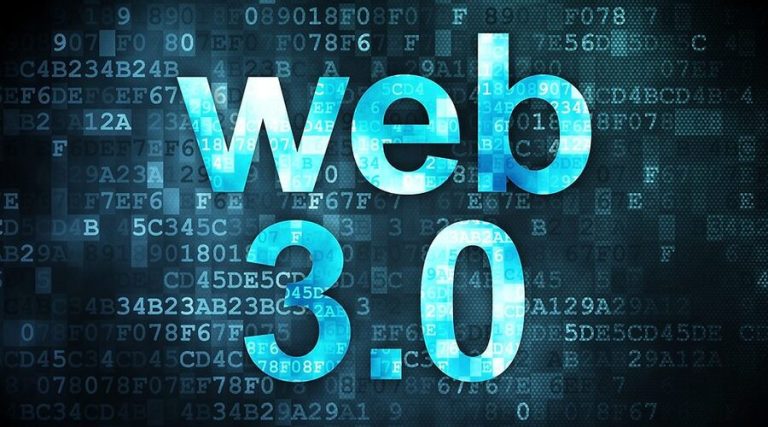
Web 3 and blockchain technology have the potential to revolutionize the financial industry by democratizing access to financial services. In this article, we will explore the various ways in which Web 3 can increase financial inclusion and provide opportunities for underserved communities.
What is Web 3?
Web 3, also known as the decentralized web, is the next generation of the Internet. It is built on blockchain technology, which enables decentralized and transparent networks that are not controlled by any single entity. Web 3 has the potential to revolutionize the way we interact with the internet and provide new opportunities for businesses and individuals.
Financial Inclusion
Financial inclusion refers to the accessibility of financial services for individuals and businesses, particularly those who are underserved or excluded from traditional financial systems. Web 3 has the potential to increase financial inclusion by providing access to financial services that were previously unavailable to underserved communities.
1. Access to Banking Services
Web 3 can provide access to banking services for the unbanked and underbanked populations. Decentralized finance (DeFi) applications built on blockchain technology can provide banking services, such as savings accounts, loans, and investments, without the need for traditional financial intermediaries.
2. Cross-Border Payments
Web 3 can enable cross-border payments without the need for intermediaries, reducing transaction fees and increasing the speed of transactions. Blockchain technology enables peer-to-peer transactions that are secure and transparent, making it easier for individuals and businesses to conduct cross-border transactions.
3. Microfinance
Web 3 can provide microfinance opportunities for small businesses and entrepreneurs. Blockchain technology enables the creation of decentralized lending platforms, allowing individuals and businesses to access loans without the need for traditional financial institutions.
Decentralization

Decentralization is a key feature of Web 3, and it has the potential to revolutionize the financial industry by reducing the power of traditional financial intermediaries.
1. Decentralized Financial Intermediaries
Web 3 enables the creation of decentralized financial intermediaries that are not controlled by any single entity. This can reduce the power of traditional financial intermediaries and increase competition, leading to better services and lower transaction fees for consumers.
2. Decentralized Identity
Web 3 can provide decentralized identity solutions that can be used for financial transactions. This can increase security and reduce the risk of identity theft and fraud.
3. Smart Contracts
Smart contracts are self-executing contracts that can be programmed to perform specific functions. Web 3 enables the creation of decentralized applications that use smart contracts to automate financial transactions, reducing the need for intermediaries and increasing efficiency.
Challenges
While Web 3 has the potential to increase financial inclusion and decentralize the financial industry, it also faces several challenges.
1. Adoption
Web 3 is still in its early stages of development, and adoption is limited. There is a lack of awareness and understanding of the technology, particularly among underserved communities.
2. Regulatory Environment
The regulatory environment for Web 3 and blockchain technology is still evolving, and there is uncertainty around the legal framework for decentralized finance applications.
3. Scalability
Web 3 networks currently have scalability issues, with some blockchain networks struggling to handle large numbers of transactions.
Opportunities
Despite the challenges, Web 3 presents several opportunities for the financial industry.
1. Innovation
Web 3 has the potential to unleash a wave of innovation in the financial industry by enabling new business models and revenue streams.
2. Financial Inclusion
Web 3 can increase financial inclusion by providing access to financial services for underserved communities.
3. Decentralization
Web 3 can decentralize the financial industry by reducing the power of traditional financial intermediaries and creating new opportunities for individuals and businesses. Transparency and Accountability
Transparency and accountability
are crucial features of Web 3 and blockchain technology. The transparent nature of blockchain technology enables individuals to track and verify financial transactions, reducing the risk of fraud and increasing accountability. Web 3 can also enable the creation of decentralized autonomous organizations (DAOs) that are governed by smart contracts, providing transparency and accountability in decision-making processes.
Interoperability
Interoperability refers to the ability of different blockchain networks to communicate and work together. In the context of Web 3 and financial services, interoperability is crucial in ensuring that different financial systems can work together seamlessly. Web 3 is exploring ways to improve interoperability between different blockchain networks, enabling a more connected and integrated financial ecosystem.
Cybersecurity
Cybersecurity is a significant concern in the financial industry, and Web 3 can provide new opportunities to improve security and reduce the risk of cyberattacks. The transparent nature of blockchain technology enables individuals to track and verify financial transactions, reducing the risk of fraud and cyberattacks. Additionally, Web 3 can enable the creation of decentralized identity solutions that are more secure and less vulnerable to cyberattacks.
Tokenization
Tokenization refers to the representation of real-world assets, such as stocks, bonds, and real estate, as digital tokens on a blockchain network. Web 3 can enable the tokenization of assets, making it easier for individuals and businesses to invest in these assets. Tokenization can also provide increased liquidity and transparency in the financial industry.
Environmental Sustainability
Environmental sustainability is a growing concern in the financial industry, and Web 3 can provide new opportunities to promote sustainability. For example, blockchain technology can enable the creation of carbon credit markets, providing financial incentives for individuals and businesses to reduce their carbon footprint. Additionally, Web 3 can enable the creation of decentralized energy grids, reducing the reliance on centralized energy systems and promoting renewable energy sources.
Intellectual Property Rights
Web 3 can enable the creation of decentralized platforms for intellectual property rights management. Blockchain technology can provide a transparent and secure way to track ownership and usage of intellectual property, reducing the risk of piracy and promoting the fair distribution of royalties to content creators.
Open Banking
Open banking refers to the practice of sharing financial data between different financial institutions and third-party providers. Web 3 can enable the creation of decentralized open banking platforms that enable individuals and businesses to share their financial data securely and transparently. This can lead to increased competition and innovation in the financial industry and provide individuals with more control over their financial data.
Community Development
Web 3 can enable the creation of decentralized financial communities that are governed by smart contracts and community consensus. These communities can provide financial services to underserved communities, such as microfinance and peer-to-peer lending, without the need for traditional financial intermediaries. Community development is a crucial aspect of Web 3 and can lead to increased financial inclusion and decentralization.
Data Privacy
Data privacy is a growing concern in the digital age, and Web 3 can provide new opportunities to protect individuals’ financial data. Blockchain technology can enable the creation of decentralized data storage systems that are more secure and less vulnerable to data breaches. Additionally, Web 3 can enable the creation of decentralized identity solutions that provide individuals with more control over their personal data.
Financial Regulation
Financial regulation is a crucial aspect of the financial industry, and Web 3 is exploring ways to improve regulatory compliance in decentralized financial systems. For example, the use of smart contracts can enable regulatory compliance to be built into financial transactions automatically. Additionally, decentralized autonomous organizations (DAOs) can be governed by smart contracts that comply with regulatory requirements.
Philanthropy and Social Impact
Web 3 can enable the creation of decentralized philanthropic and social impact platforms. Blockchain technology can provide transparency and accountability in the distribution of funds and enable individuals to donate directly to social impact projects without the need for intermediaries. Additionally, Web 3 can enable the creation of decentralized social impact investment platforms, providing new opportunities for individuals and businesses to invest in projects that have a positive social impact.
Governance
Web 3 can enable new forms of governance that are more democratic and transparent. Decentralized autonomous organizations (DAOs) can be governed by smart contracts that enable community members to vote on decisions and proposals. This can increase transparency and accountability in decision-making processes and reduce the power of centralized institutions.
Global Financial Inclusion
Web 3 has the potential to increase global financial inclusion by providing access to financial services for individuals and businesses in developing countries. Decentralized finance (DeFi) applications can provide banking services, such as savings accounts, loans, and investments, without the need for traditional financial intermediaries. Additionally, Web 3 can enable cross-border payments without the need for intermediaries, reducing transaction fees and increasing the speed of transactions.
Future Outlook
The future of Web 3 and the financial industry is promising. As the technology develops and adoption increases, we can expect to see significant shifts towards decentralized financial systems that are more inclusive, transparent, and efficient. However, the industry must address the challenges of adoption, regulatory uncertainty, and scalability to ensure that the benefits of Web 3 are accessible to all.
Conclusion
In conclusion, Web 3 and blockchain technology have the potential to democratize access to financial services by providing new opportunities for underserved communities and reducing the power of traditional financial intermediaries. While the technology still faces challenges, the future outlook is promising, and we can expect to see significant innovation in the financial industry as the technology develops and adoption increases.
I have been writing about cryptocurrencies for over two years and I’m widely considered one of the most knowledgeable and respected authors in the space. I have a deep understanding of the underlying technology and market dynamics, and my insights have helped countless investors make informed decisions about their portfolios. I’m a speaker and commentator, and my work has been featured in major publications such as CoinDesk, Forbes, and The Wall Street Journal. I also run a popular cryptocurrency trading signals service that has helped thousands of people make money in the volatile but potentially lucrative world of digital assets.


